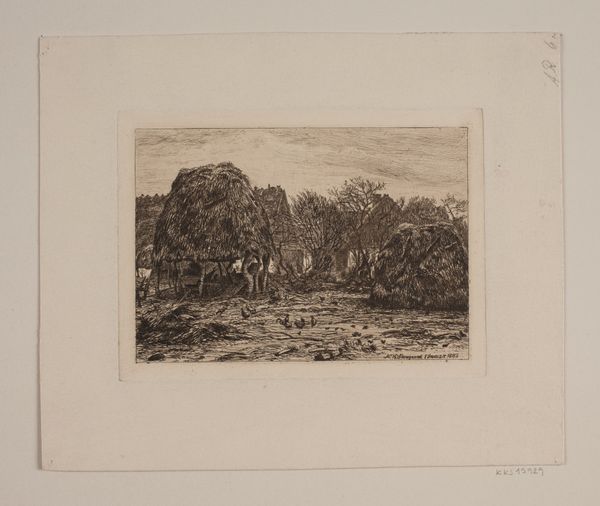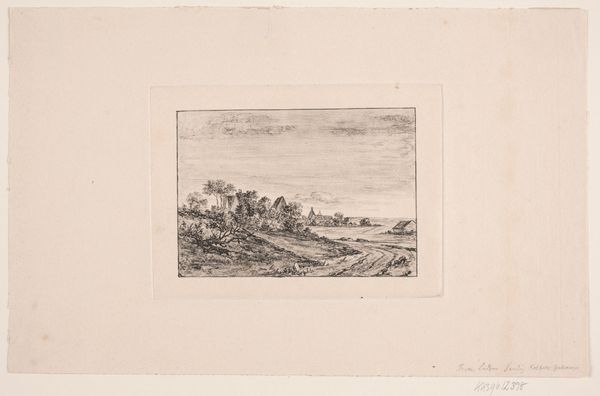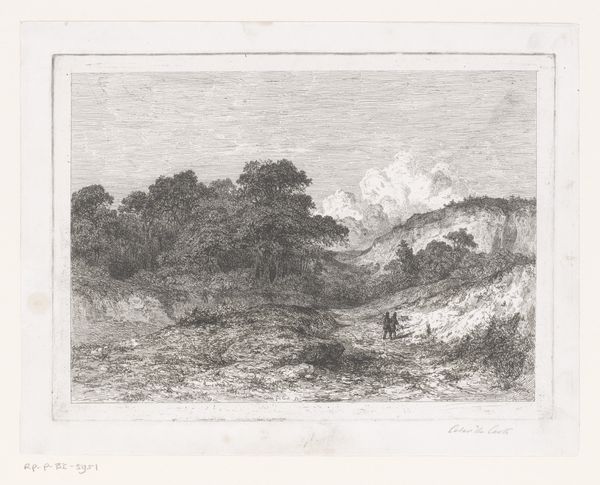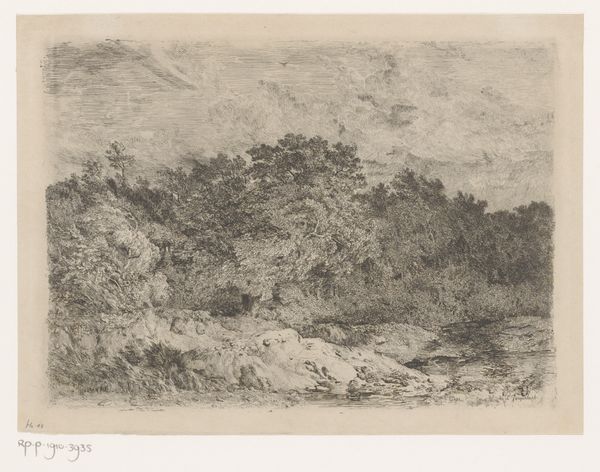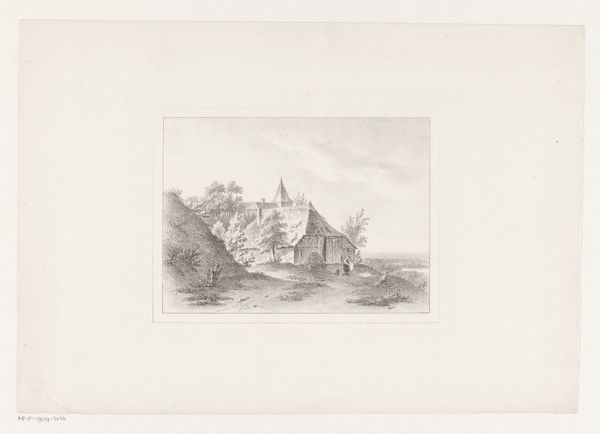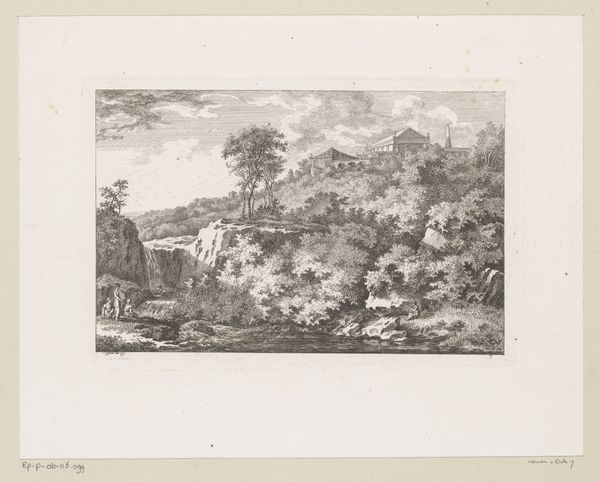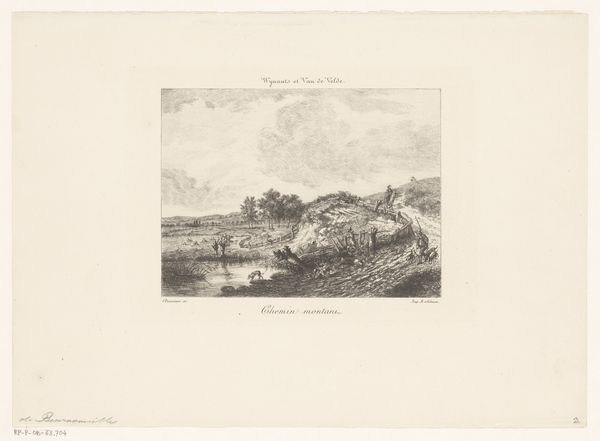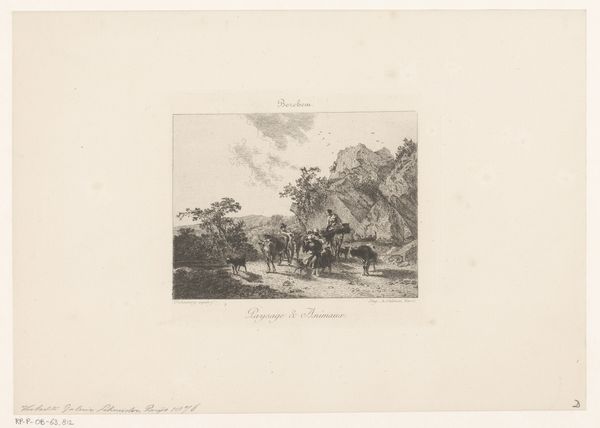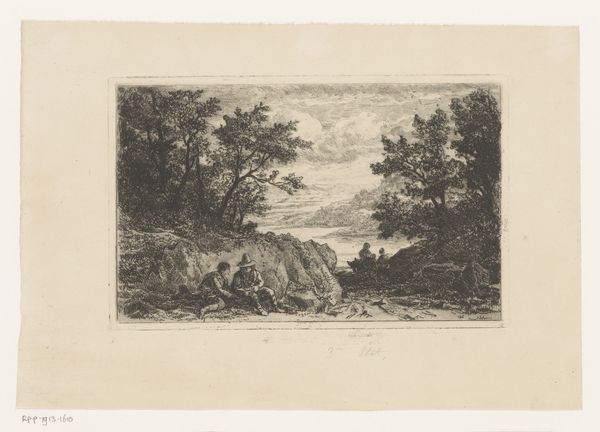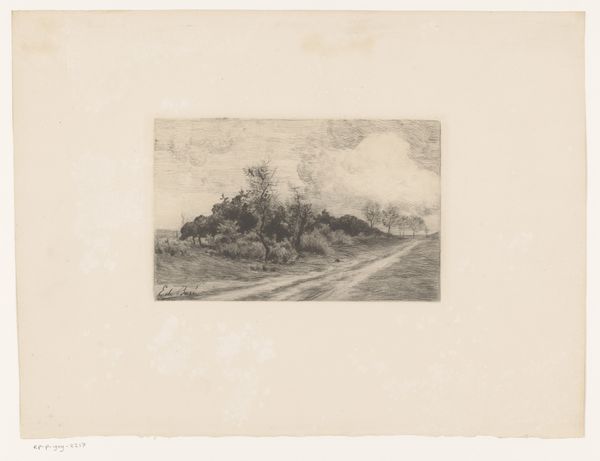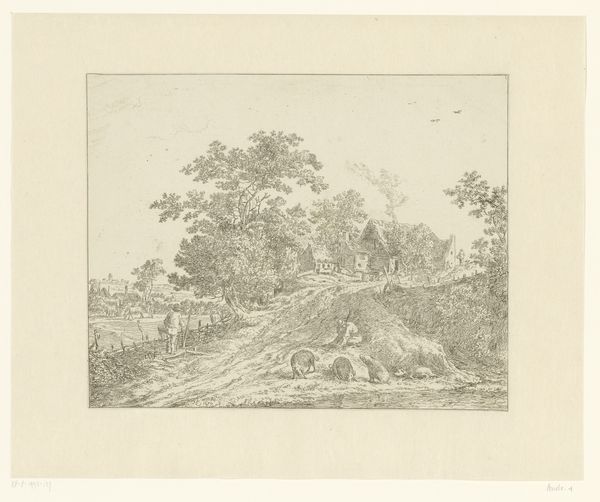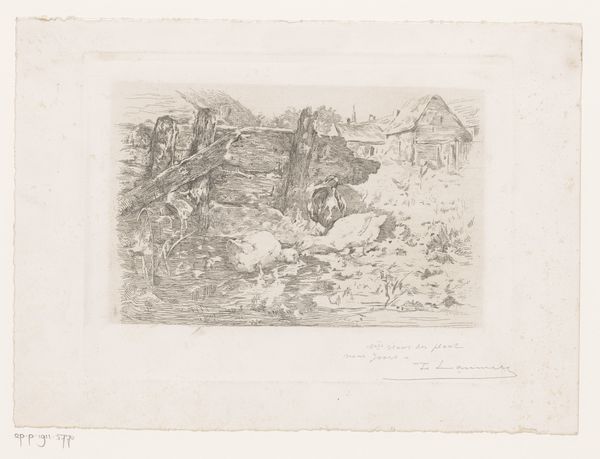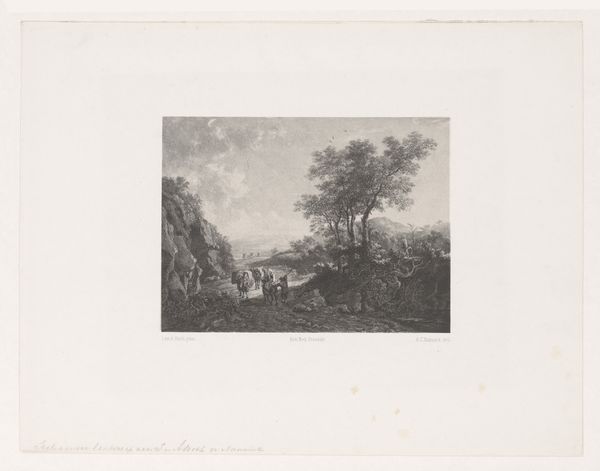
Dimensions: height 115 mm, width 145 mm
Copyright: Rijks Museum: Open Domain
This etching, 'Landscape with Ruin by the Water', was made by Pierre Louis Kuhnen in the 19th Century. As an etching, the image began with a metal plate, likely zinc or copper, covered in a waxy, acid-resistant ground. The artist then used a sharp needle to scratch the image into this ground, exposing the metal beneath. When dipped in acid, the exposed lines were etched, creating grooves. The plate was then inked, and the surface wiped clean, leaving ink only in the etched lines. Finally, paper was pressed against the plate, transferring the image. The final print shows a scene of leisure, with figures by the river and a ruin in the background, rendered with fine, delicate lines. The etching process allowed Kuhnen to create a wealth of detail, capturing the textures of the landscape. But it's worth remembering that this image of picturesque calm was only achieved through skilled labor and a complex industrial process. By considering the etching process, we can appreciate how social and economic conditions can shape our aesthetic experiences.
Comments
No comments
Be the first to comment and join the conversation on the ultimate creative platform.
